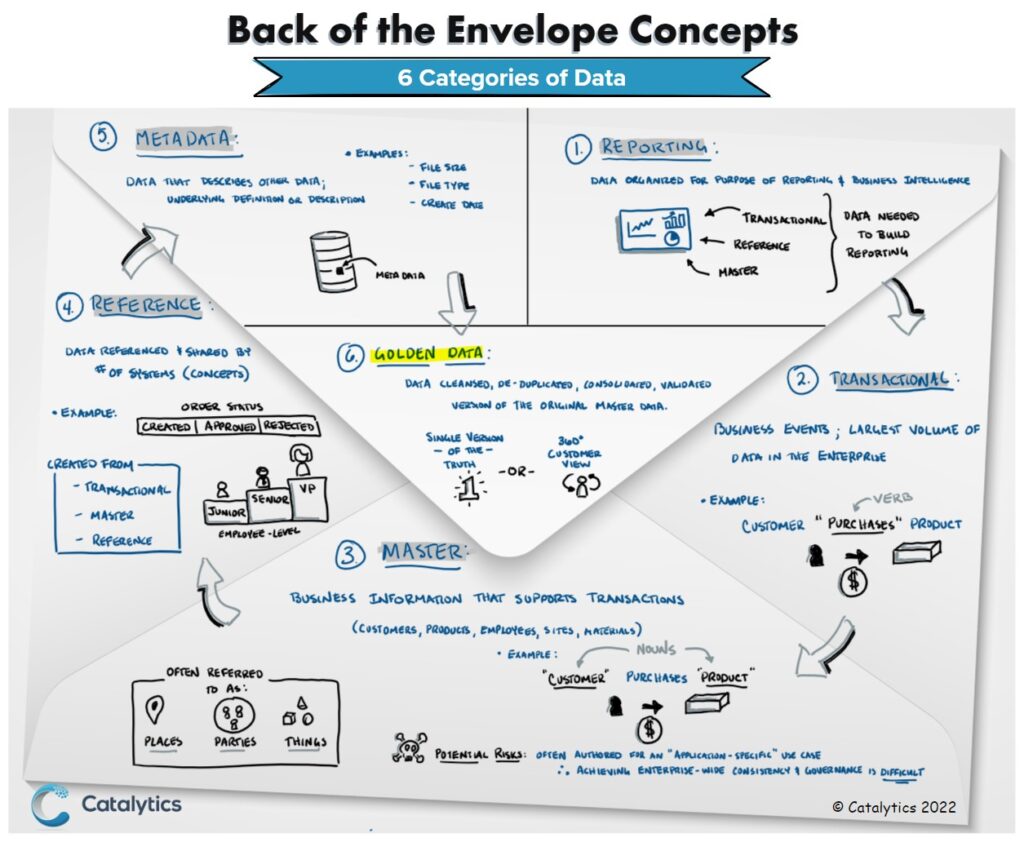Data is everywhere and comes in many different forms. Data might live on a spreadsheet, be stored in a database, or reside somewhere in the cloud. It can also take various visual representations such as charts, graphs, and statistics. More importantly, data has inherent properties that cause it to fall into one of six unique categories. Each data type serves its own purpose and can be used independently or in combination with other data for added value.
To understand how each type of data can best be put to use, consider the following six categories:
Reporting Data


Reporting Data is any data organized to provide intelligence to the business. Reporting data may be used in either descriptive or diagnostic research. Reporting data is produced by combining other types of data, such as transactional data, master data, and master reference data.
Transactional Data


Transactional Data is the largest volume of data an enterprise will create. Transactional data represents business events or “Verbs”. For example, when a customer “purchases” a product, that transaction creates Transactional Data. This data can be stored in numerous applications (CRM, HR, POS, ERP).
Master Data


Compared to Transactional Data, Master Data can best be described as the “Nouns”; or as Places, Parties, and Things. These are customers’ names, materials used in creating products, or warehouses/store locations. The importance of Master Data should not be ignored. Because various functions can author Master Data for their specific use case, achieving enterprise-wide consistency and governance can be extremely difficult. This is why it becomes vital to invest in a Master Data Management platform to ensure that Master Data remains reliable when tackling any significant data strategy.
Reference Data


Reference Data is a subset of Master Data (often referred to as Master Reference Data). It refers to concepts that affect a specific business process or provides additional clarity. For example, the status of orders (created, approved, rejected, etc.) is an example of data that affects business processes. At the same time, employee job position is an example of an additional standardized semantic that clarifies a data record (junior, senior, VP, etc.).
MetaData


MetaData, in its simplest terms, is Data that describes Data. File size, file type, create date, and author are all examples of MetaData.
Golden Data


As you strive to gather insights from data, the key is reliability. When a database has been cleansed, consolidated, and validated with the original source it is said to be “Golden”. This data can have tremendous value to an organization because it represents a single version of the truth or a 360-degree view of a customer. Users of this data can trust it and the insights inferred from its analysis.
Conclusion
When it comes to data, a number of different types serve different roles within an organization. It is essential to determine which type of data you will use and how you will use it. And remember when possible, “Stay Golden Ponyboy”.
Reference material: https://www.semarchy.com/blog/backtobasics_data_classification/

